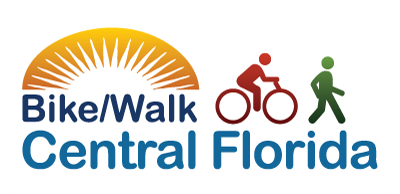
Communities that are unsafe for bicyclists and pedestrians not only miss out on opportunities for economic development but may also see negative economic impacts – including hefty healthcare costs.
A new report from the Florida Department of Health measures the economic impact of bike/ped injuries statewide by looking at hospital bills.
In 2014, the median cost of hospital stays – typically for more severe bicyclist and pedestrian injuries – hovered at $65,000 for injured bicyclists and $82,000 for injured pedestrians in Florida. The median cost for hospital outpatient care (meaning the injured bicyclist or pedestrian was treated and released without being admitted) was $4,500 for injured bicyclists and $4,100 for injured pedestrians. The report did not estimate costs for bicyclist and pedestrian fatalities.
Of course, calculating the economic impact of bicycle and pedestrian injuries is complicated – a hospital bill is only going to tell you so much.
How do you put a dollar sign on the loss of a life or the damage to a survivor’s livelihood? Depending on the severity of injury, a survivor’s health, financial stability and so forth may change drastically. There are other costs, sometimes hidden, that also need to be accounted for.
The National Safety Council (NSC), for example, calculates the economic cost of bicyclist and pedestrian injuries to include additional variables such as wage and productivity losses, administrative expenses, and insurance costs in addition to medical expenses.
Based on the NSC formula, the Pedestrian and Bicycle Information Center estimates that the total cost of bicycle and pedestrian injuries and fatalities for 2012 was over $32 billion in the United States.
On a more local scale, MetroPlan Orlando conducted a Health Impact Assessment of State Road 50 (Colonial Drive) from January to June 2015 and estimated the number of bicyclist and pedestrian injuries and fatalities within the study area alone amounted to a price tag of $1.1 billion between 2009 and 2014 – based on the U.S. Department of Transportation’s Value of a Statistical Life (VSL) metric.
Even with these varied methods for estimating the economic impact of bicyclist and pedestrian injuries and fatalities, the main point is that people who bike or walk matter and there is a substantial cost that comes with not investing in safe and effective bicyclist and pedestrian infrastructure.
Other 2014 stats from the Florida Department of Health report include:
- Majority of bicyclists and pedestrians fatally injured in Florida were Florida residents
- 7 percent of all Florida traffic fatalities involved bicyclists and 23.9 percent involved pedestrians
- Traumatic brain injuries were involved in 41 percent of bicyclist fatalities and 25 percent of pedestrian fatalities in Florida
- 32 percent of bicyclists and 26 percent of pedestrians treated at Florida hospitals either self-paid, had limited health insurance coverage or no health insurance coverage at all
View the full report here.

